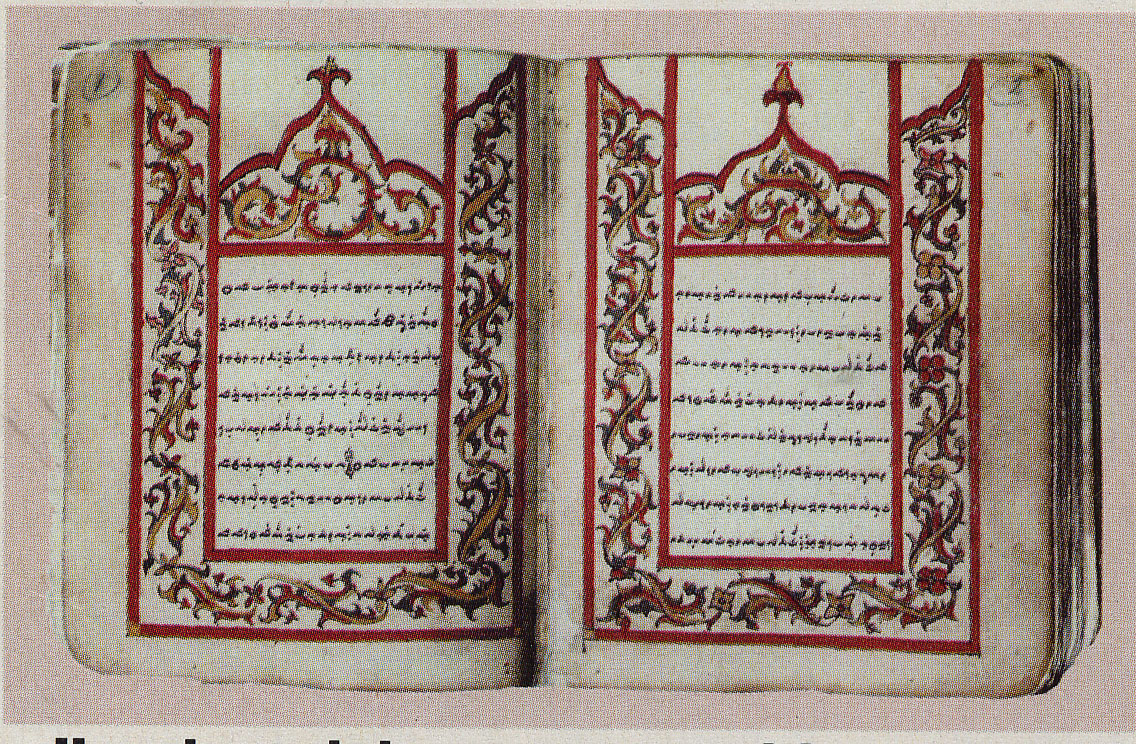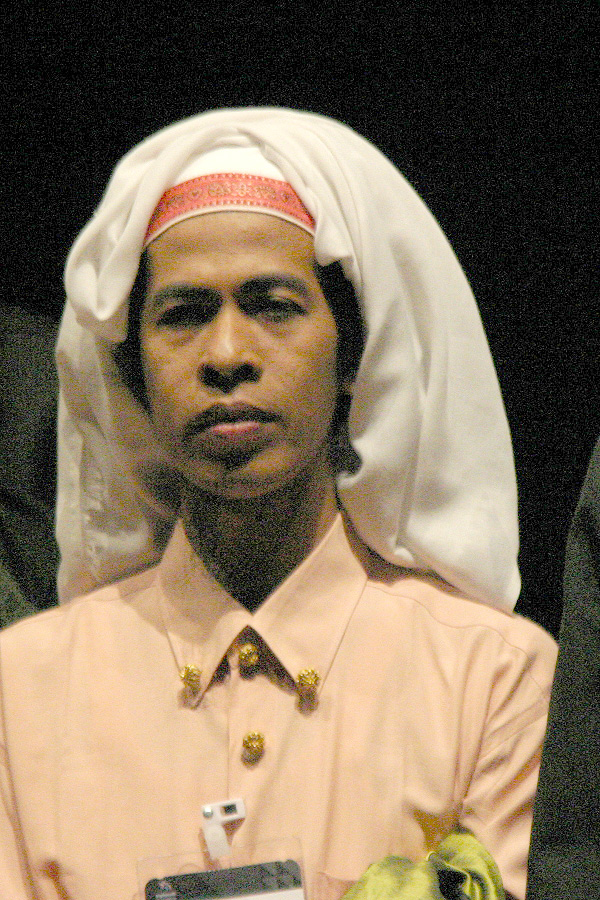I La Galigo on:
[Wikipedia]
[Google]
[Amazon]
''I La Galigo'' is music-theater work by Robert Wilson that has been shown since 2004 in Asia, Europe, Australia and the

 Out of the vast material in Sureq Galigo, that covers the story of a so-called Middle World (that of humanity), the drama focuses on one particular narrative thread, about the warrior Sawerigading, and his twin sister, We Tenriabeng. They are descendants of the gods of the heavens and the gods of the underworld who send their offspring to inhabit the earth. From the time in the womb of their mother, which is put onto stage, they are destined to fall in love with each other. Worried that their incest would doom the world, the Bissu priests order them to be separated at birth. Sawerigading travels abroad but is eventually told about the world's most beautiful woman. He returns home and actually falls in love with his twin sister. To avoid the worst, We Tenriabeng introduces him to a woman of equal beauty, whom he marries to have a son named I La Galigo. Nevertheless, the earth is cleansed of all life another time and their children mate again to repopulate it and start a new era.
Out of the vast material in Sureq Galigo, that covers the story of a so-called Middle World (that of humanity), the drama focuses on one particular narrative thread, about the warrior Sawerigading, and his twin sister, We Tenriabeng. They are descendants of the gods of the heavens and the gods of the underworld who send their offspring to inhabit the earth. From the time in the womb of their mother, which is put onto stage, they are destined to fall in love with each other. Worried that their incest would doom the world, the Bissu priests order them to be separated at birth. Sawerigading travels abroad but is eventually told about the world's most beautiful woman. He returns home and actually falls in love with his twin sister. To avoid the worst, We Tenriabeng introduces him to a woman of equal beauty, whom he marries to have a son named I La Galigo. Nevertheless, the earth is cleansed of all life another time and their children mate again to repopulate it and start a new era.
 While parts of the story are narrated, the actors are not speaking but expressing themselves through dance and gestures. The three-hour-long performance is accompanied extensively by light effects characteristic for Wilson's work and music by an onstage ensemble. Their music sounds traditional, but has actually been composed for the production by the
While parts of the story are narrated, the actors are not speaking but expressing themselves through dance and gestures. The three-hour-long performance is accompanied extensively by light effects characteristic for Wilson's work and music by an onstage ensemble. Their music sounds traditional, but has actually been composed for the production by the
 The production cast consists of 53 musicians and dancers, exclusively from Indonesia and mostly from Sulawesi, as well as one of the few remaining ''
The production cast consists of 53 musicians and dancers, exclusively from Indonesia and mostly from Sulawesi, as well as one of the few remaining ''
Production home page
Indonesian music 2004 musicals Plays based on myths and legends de:La Galigo fr:La Galigo id:Sureq Galigo ms:La Galigo
United States
The United States of America (U.S.A. or USA), commonly known as the United States (U.S. or US) or America, is a country primarily located in North America. It consists of 50 states, a federal district, five major unincorporated territorie ...
. It is based on an adaption by Rhoda Grauer of the epic creation myth Sureq Galigo of the Bugis
The Bugis people (pronounced ), also known as Buginese, are an ethnicity—the most numerous of the three major linguistic and ethnic groups of South Sulawesi (the others being Makassar and Toraja), in the south-western province of Sulawe ...
from South Sulawesi
South Sulawesi ( id, Sulawesi Selatan) is a province in the southern peninsula of Sulawesi. The Selayar Islands archipelago to the south of Sulawesi is also part of the province. The capital is Makassar. The province is bordered by Central Sula ...
, written between the 13th and 15th century in the Indonesian language Buginese.
Plot summary

Production
Java
Java (; id, Jawa, ; jv, ꦗꦮ; su, ) is one of the Greater Sunda Islands in Indonesia. It is bordered by the Indian Ocean to the south and the Java Sea to the north. With a population of 151.6 million people, Java is the world's List ...
nese composer Rahayu Supanggah after intensive research in South Sulawesi. For better dramatic expression, other Javanese and Balinese instruments were added to the initially five traditional Sulawesi instruments and new ones were made as well, amounting eventually to 70 instruments played by 12 musicians.
Rehearsals for I La Galigo began in workshops at The Watermill Center
The Watermill Center is a center for the arts and humanities in Water Mill, New York, founded in 1992 by artist and theater director Robert Wilson.
Overview
The Watermill Center is "a laboratory for performance" founded by Robert Wilson in 1992 ...
on Long Island, New York.
Cast
bissu
The Bugis people are the most numerous of the three major ethnic groups of South Sulawesi, Indonesia, with about 3 million people. Most Bugis are Muslim, but many pre-Islamic rites continue to be honoured in their culture, including the vi ...
'' shamans, Puang Matoa Saidi, from the Bugis transvestite community who narrates parts of the story.
International performances
Finally for the first time I La Galigo performance in their home town, in Makassar the capital city of South Sulawesi, Indonesia. I La Galigo back to home after 6 years performance around the world.See also
* Coppong Daeng Rannu, a master of Makassar ethnic-group dances, best known as the Rice Goddess in I La GaligoReferences
{{reflistExternal links
Production home page
Indonesian music 2004 musicals Plays based on myths and legends de:La Galigo fr:La Galigo id:Sureq Galigo ms:La Galigo